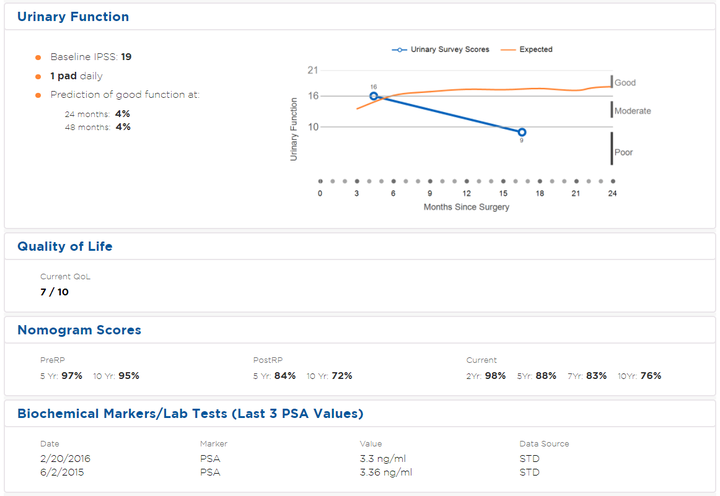Personalized health reports and prognoses for cancer patients

One of the services my team provides at MSK is to design and build digestible health reports based on patient-reported survey and medical record data. These reports highlight the most recent and relevant information to facilitate a more productive meeting between patients and care providers. My contribution to the reports is to assist in creating the nomogram prediciton models.
An unfortunate fact about healthcare is that providers can only dedicate a limited amount of time to each patient. Another compounding fact is that patients may have years worth of documentation on their health status, particularly for cases of chronic disease like cancer. A problem that arises is that the more time a care provider spends sifting through medical records, the less time they have to spend with a patient to address their concerns and formulate the best plan given their health goals and other considerations. The advanced reports project helps solve the problem of sifting through years of data by accurately summarizing the most relevant information from the health records.
My teammates work with the hospital services to determine which details of a patient’s medical record are the most relevant, and then design and build a report that presents this information in a clear and succinct format. Some of these reports, such as the one pictured above, also contain predictions from statistical models for various health outcomes.
The image above is from a mockup for the post-surgery prostate cancer report. The first chart shows the urinary function scores based on survey responses for a hypothetical patient. It also shows an orange line, representing the risk-adjusted average scores among all patients who completed the surveys.
A care provider can look at the chart and instantly absorb the patient’s history of urinary function and be alerted to any issues. In addition, the personalized probabilities of regaining good function provide estimates that could be helpful in counseling the patient and determining the appropriate treatment course.
Similarly, the nomogram section gives personalized predictions for the probability of survival at various timepoints from before radical prostatectomy surgery, soon after, and currently. In the actual report, the prediction model behind these probabilities relies on data from thousands of cancer patients and give estimates that would be difficult for a care provider to derive from browsing the medical records. This information could be considered when framing expectations and discussing the goals for treatment.
The feedback we’ve received on these reports from care providers has been overwhelmingly positive and we continue to improve them and expand to new hospital services with purpose built reports.